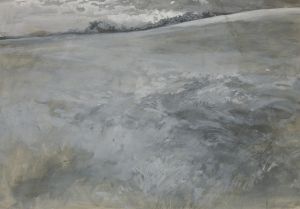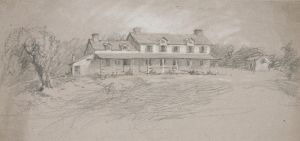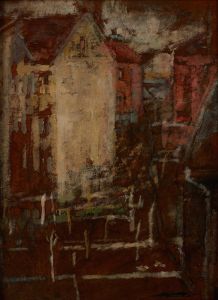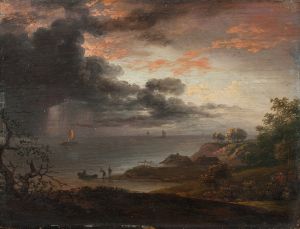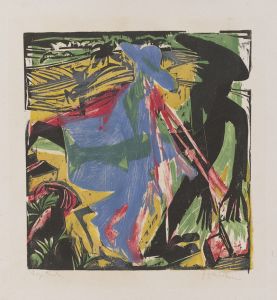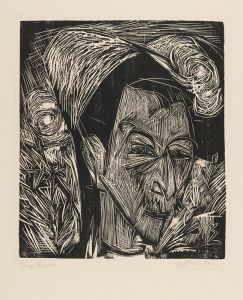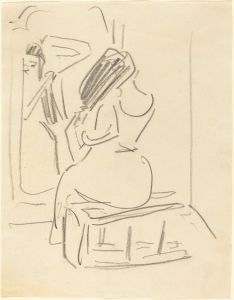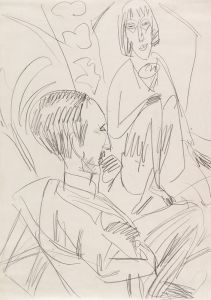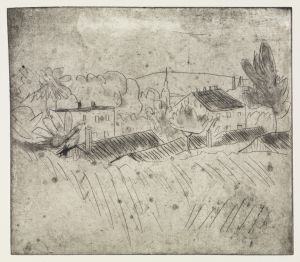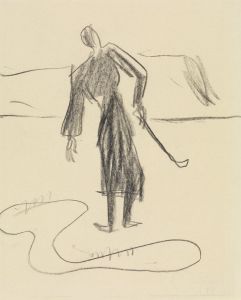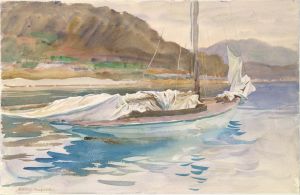
Fehmarnlandschaft
A hand-painted replica of Ernst Ludwig Kirchner’s masterpiece Fehmarnlandschaft, meticulously crafted by professional artists to capture the true essence of the original. Each piece is created with museum-quality canvas and rare mineral pigments, carefully painted by experienced artists with delicate brushstrokes and rich, layered colors to perfectly recreate the texture of the original artwork. Unlike machine-printed reproductions, this hand-painted version brings the painting to life, infused with the artist’s emotions and skill in every stroke. Whether for personal collection or home decoration, it instantly elevates the artistic atmosphere of any space.
Ernst Ludwig Kirchner was a prominent German expressionist painter and one of the founding members of the artist group Die Brücke (The Bridge), which played a pivotal role in the development of modern art in the early 20th century. Kirchner's work is characterized by its vibrant color palette, dynamic compositions, and emotive subject matter, often reflecting the tumultuous social and political changes of his time.
"Fehmarnlandschaft" is one of Kirchner's many landscape paintings, showcasing his distinctive style and his deep connection to nature. The painting is believed to have been inspired by the island of Fehmarn, located in the Baltic Sea, where Kirchner spent several summers between 1912 and 1914. This period was crucial for Kirchner, as it allowed him to explore new themes and techniques, away from the urban environment of Berlin.
The landscapes of Fehmarn provided Kirchner with a serene and inspiring setting, contrasting with the bustling city life that he often depicted in his earlier works. In "Fehmarnlandschaft," Kirchner captures the essence of the island's natural beauty through bold brushstrokes and a vivid color scheme. His use of exaggerated forms and intense colors reflects the influence of both post-impressionism and the burgeoning expressionist movement, which sought to convey emotional experience rather than physical reality.
Kirchner's time on Fehmarn was not only artistically productive but also personally significant. The island offered him a retreat where he could focus on his art and find solace in nature. This period of relative tranquility is reflected in the harmonious composition and the sense of freedom that permeates "Fehmarnlandschaft." The painting exemplifies Kirchner's ability to transform a simple landscape into a powerful expression of mood and emotion.
Throughout his career, Kirchner's work was marked by a constant evolution of style and subject matter. His early works were heavily influenced by the art of Edvard Munch and the Fauves, while his later pieces incorporated elements of primitivism and abstraction. Despite these changes, Kirchner's commitment to capturing the essence of his subjects remained a constant theme in his art.
"Fehmarnlandschaft" is a testament to Kirchner's skill as a landscape painter and his ability to convey the emotional resonance of a place. The painting stands as a significant example of his work during the Fehmarn period, highlighting his mastery of color and form. Today, Kirchner is celebrated as one of the leading figures of German expressionism, and his works continue to be studied and admired for their innovative approach and emotional depth.





